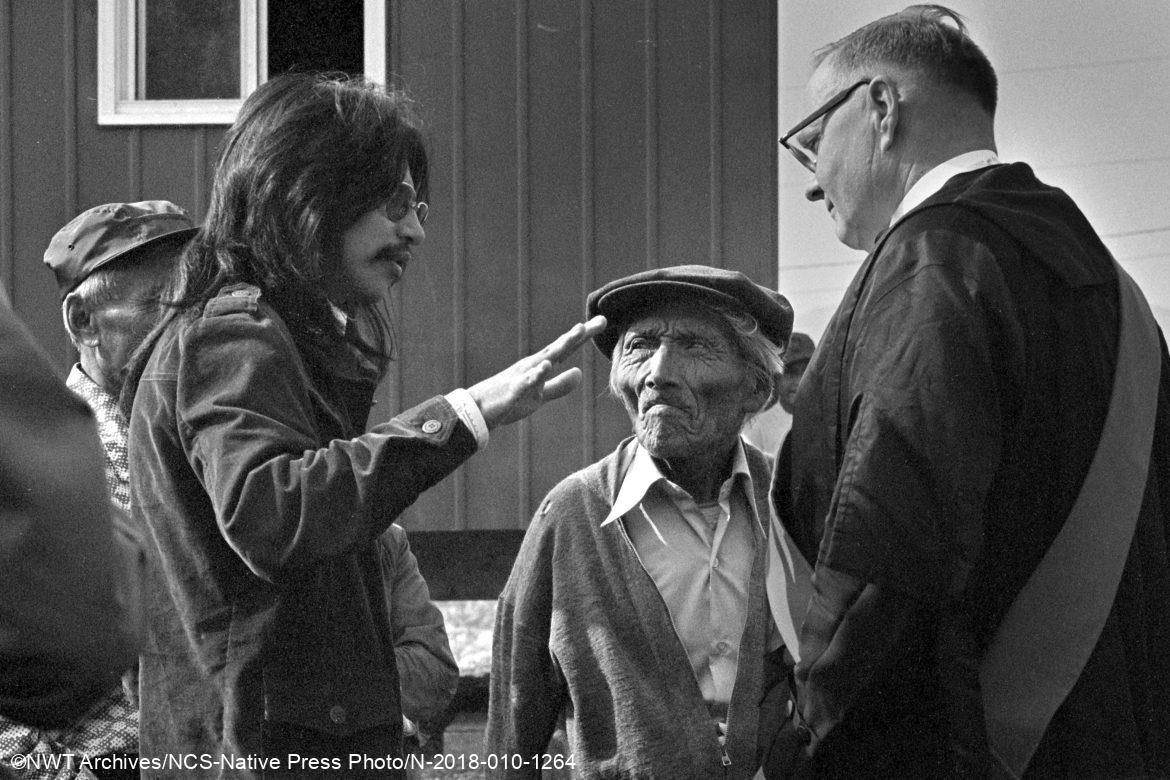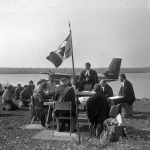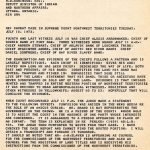1973
The Birth of Indigenous Land Claims
Treaty 8 (1899) and Treaty 11 (1921) are historic treaties between the Dene and the Crown on behalf of the Government of Canada that cover much of the land that is today’s Northwest Territories. Since the negotiating and signing of these treaties, the disagreements over the meaning and purpose of the agreements have led to acts of resistance by the NWT Dene towards the Government of Canada.
The treaties state that the Dene “do hereby cede, release, surrender and yield up to the government of the Dominion of Canada, for His Majesty the King and his Successors forever, all their rights, titles and privileges,” to the land and its resources. The Dene claimed the Chiefs, who could not read or write in English, were told at the time of signing that the treaties were simply expressions of friendship and peace, that they were not selling or giving away their land, and that their right to hunt and fish would remain, “as long as the sun shines and the river flows.”
To fight for Dene rights and regain control over lands they had inhabited for thousands of years, the Dene, in 1969, formed an organization called the Indian Brotherhood of the Northwest Territories. In later years this organization was to become known as the Dene Nation.
On March 24th, 1973, 16 Dene Chiefs, the core of the Indian Brotherhood, attempted to register a caveat at the GNWT Land Titles Office to gain a legal interest in Crown land of the NWT. They claimed this interest in the land by virtue of their Aboriginal rights against the title of more than a million square kilometres of Crown land, almost all modern-day Northwest Territories. Chief Francois Paulette, from Smiths Landing First Nation, put his name on the application for the caveat. The Registrar of Land Titles rejected the application because it would have frozen all land transfers and industrial development in the Northwest Territories. The question of the caveat’s legal validity was then referred to the Supreme Court of the Northwest Territories for a ruling.
Supreme Court Justice William G. Morrow began hearing the case on May 15th, 1973. Justice Morrow took a unique approach to listening to testimonies. His court travelled to all communities in the claimed area and heard oral evidence directly from Dene Elders, some of whom were present at the signing of Treaty 11 and remembered the treaty-making negotiations.
The issue was whether the Chiefs who signed Treaties 8 and 11 (or the Dene they represented) knew they were giving up ‘ownership’ of the land. Most witnesses were resolute in saying that the issue of land ownership was not raised during treaty negotiations. Discussions primarily focused on hunting and fishing rights and how the land and resources would be shared peacefully.
On September 6th, 1973, Justice Morrow found that the Dene “are the prima facie owners of the lands covered by the caveat – that they have what is known as aboriginal rights.” He also found that “notwithstanding the language of the two Treaties, there is sufficient doubt on the facts that aboriginal title was extinguished that such claim for the title should be permitted to be put forward by the caveators.”
The 16 Chiefs and the Dene they represented won their case, but the victory was short-lived. Morrow’s decision allowing the placing of a caveat on a million square kilometres of land in the Northwest Territories was overturned on appeal to a higher court. This higher court did not question the ruling that Dene had ‘aboriginal rights’ to the land.
This partial victory made it evident that Indigenous land rights in the Northwest Territories needed clarification. In 1976 the Government of Canada, the Dene Nation, and the Métis Association of the Northwest Territories agreed to negotiate a Comprehensive Land Claim Agreement.
From 1981 to 1988, seven years of meetings resulted in an Agreement in Principle (AIP) with one central sticking point. The Government of Canada insisted that the Dene/Métis Comprehensive Land Claim include surrendering Aboriginal Title to the land. Delegates at the 1990 Dene/Métis Annual General Assembly rejected the terms of this agreement.
With the breakdown of a single land claim that would have covered all of the NWT, the claim process became regionalized. Land Claim agreements were signed with the Inuvialuit (1984), Gwich’in (1992), Sahtu Dene/Métis (1994), and the Tłı̨chǫ included Land Claims and self-government provisions (2002). Negotiations are currently underway with the Akaitcho Territory Dene First Nation, the Dehcho First Nations, and the Northwest Territories Métis Nation.




